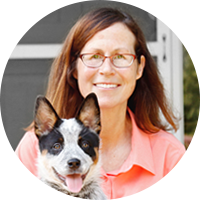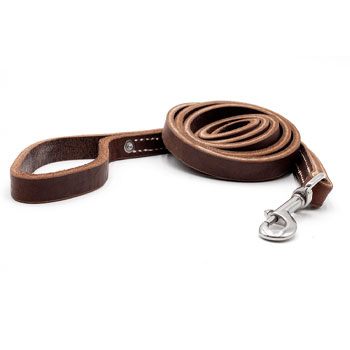April 26, 2011
I have a neutered 4 year old Miniature American Eskimo that is aggressive to visitors. She bites at their pant legs, what should I do?
Full Question:
I have a neutered female 4 yr-old Miniature American Eskimo. My husband and I both work during the day, and she is alone all day. A very small amount of obedience training has been done with her, but she pretty much runs our house. The problem: She has become aggressive with most people who approach our home or us. She seems mostly aggressive with men, and has grabbed three or four by the pant leg. I need a video to help train her with this problem. What video would you recommend? (I took my two previous Eskimos to Dog Obedience classes and found them not to be very successful with this problem.) HELP!Dena

 Ed's Answer:
Ed's Answer:
This can be stopped but it takes a commitment on your part and your husband’s part. 99.9% of the times that this problem can not be stopped it's a handler problem and not a problem with the dog.
The solution begins with the correct obedience training. Everything to do with problem solving begins with obedience training of one sort or another. I strongly recommend you read what I have to say in the description of my tape on Basic Dog Obedience.
You need to take your dog through this program. You may need a prong training collar depending on the temperament of the dog. Some people think little dogs do not need training collars, when in fact I have seen a lot of very hard little dogs. If you do not understand what I mean by a hard dog you can refer to my article on the subject - click here.
Your dog needs to go through the learning phase (explained in detail in my tape) on the long down. The dog needs to understand that you are prepared to follow through with corrections in the correction phase. These corrections need to be firm or they mean nothing to a dog like this. This is where a lot of novice dog trainers have problems. They think little "pho pho" does not need to be treated like that. Most of the time this is the root of the problem. Unless a pet owner is prepared to establish himself (or herself) as the pack leader there will never be a positive solution to any problem they face with the dog. There are very few firm and constant rules in dog training but one is this, "if a dog is at the correct stage of training to receive a correction, one good correction is worth 50 nagging corrections." That philosophy needs to be seated in the handler's mind.
I need to temper this by saying that this does not mean you go out and beat up on your dog. What it means is that if the temperament of your dog requires a level six correction (on a scale of one to ten) to be effective, you do not try and get by with a level 2 correction.
Now you need to make some place in the house the dogs spot. This can be his dog crate or a special throw rug or something like this. The dog is taught to go to his spot. He is rewarded with food (or a toy etc.) when he goes there. You need to be able to send him there when you want from anywhere in the house. This starts from a very short distance (severe feet) and ends up with you being able to send him there from a back bedroom. Make a game of this. Always reward the dog with a treat.
Once the dog knows the command, should it refuse to comply it must be corrected and dragged to the spot with a lot of praise when it gets there. Have the dog wear a 2-foot line in the house so you can easily grab it.
Up to this point the dog has not been made to stay on his spot very long. Now its time to teach him that he must stay there until you release him. Start with a few seconds and build to 30 minutes.
When that's done its time to introduce distractions. Your husband in the living room, or send him to his spot just after your husband returns home from work. Let the dog greet him and then send him to his spot after a quick pet. Again, firm corrections for non-compliance.
The ultimate distraction for this dog seems to be visitors. The procedure for handling a dog when you have a guest is to allow the person to come into the house. The dog can go up and smell the guest if there is no aggression or growling. The guest should not try and pet the dog, nor should he move away from the dog. He (or she) just stands there and talks to you ignoring the dog. Once the dog has smelled the guest you command the dog to his spot and it must stay there the entire time the visitor is in the house. You need to reinforce this with strong corrections, which may be distracting for the guest.
The important thing is that the dog is not sent to the spot without having a chance to greet the person who comes to the house. If there is any growling or nipping at this point the dog is corrected with a level 10 correction by the 2 foot drag line and taken to his spot.
You may find that after following this procedure 2 or 3 times the dog can be allowed to be around visitors. But always be prepared to reinforce any signs of aggression with a correction and sending the dog to the spot.
This entire procedure is re-establishing your position as pack leader. No matter what we think our pets are pack animals. The key to dog training is to realize this and then establish yourself as the respected pack leader. Dogs become territorial because of pack behavior, but the bottom line is that the pack leader is the one who determines when to enforce territorial lines and the pack leader determines who will fight first.
I hope that you are able to deal with the correction phase. That's the part that most people seem to have trouble with. It really all comes down to consistency, correction and praise.
The solution begins with the correct obedience training. Everything to do with problem solving begins with obedience training of one sort or another. I strongly recommend you read what I have to say in the description of my tape on Basic Dog Obedience.
You need to take your dog through this program. You may need a prong training collar depending on the temperament of the dog. Some people think little dogs do not need training collars, when in fact I have seen a lot of very hard little dogs. If you do not understand what I mean by a hard dog you can refer to my article on the subject - click here.
Your dog needs to go through the learning phase (explained in detail in my tape) on the long down. The dog needs to understand that you are prepared to follow through with corrections in the correction phase. These corrections need to be firm or they mean nothing to a dog like this. This is where a lot of novice dog trainers have problems. They think little "pho pho" does not need to be treated like that. Most of the time this is the root of the problem. Unless a pet owner is prepared to establish himself (or herself) as the pack leader there will never be a positive solution to any problem they face with the dog. There are very few firm and constant rules in dog training but one is this, "if a dog is at the correct stage of training to receive a correction, one good correction is worth 50 nagging corrections." That philosophy needs to be seated in the handler's mind.
I need to temper this by saying that this does not mean you go out and beat up on your dog. What it means is that if the temperament of your dog requires a level six correction (on a scale of one to ten) to be effective, you do not try and get by with a level 2 correction.
Now you need to make some place in the house the dogs spot. This can be his dog crate or a special throw rug or something like this. The dog is taught to go to his spot. He is rewarded with food (or a toy etc.) when he goes there. You need to be able to send him there when you want from anywhere in the house. This starts from a very short distance (severe feet) and ends up with you being able to send him there from a back bedroom. Make a game of this. Always reward the dog with a treat.
Once the dog knows the command, should it refuse to comply it must be corrected and dragged to the spot with a lot of praise when it gets there. Have the dog wear a 2-foot line in the house so you can easily grab it.
Up to this point the dog has not been made to stay on his spot very long. Now its time to teach him that he must stay there until you release him. Start with a few seconds and build to 30 minutes.
When that's done its time to introduce distractions. Your husband in the living room, or send him to his spot just after your husband returns home from work. Let the dog greet him and then send him to his spot after a quick pet. Again, firm corrections for non-compliance.
The ultimate distraction for this dog seems to be visitors. The procedure for handling a dog when you have a guest is to allow the person to come into the house. The dog can go up and smell the guest if there is no aggression or growling. The guest should not try and pet the dog, nor should he move away from the dog. He (or she) just stands there and talks to you ignoring the dog. Once the dog has smelled the guest you command the dog to his spot and it must stay there the entire time the visitor is in the house. You need to reinforce this with strong corrections, which may be distracting for the guest.
The important thing is that the dog is not sent to the spot without having a chance to greet the person who comes to the house. If there is any growling or nipping at this point the dog is corrected with a level 10 correction by the 2 foot drag line and taken to his spot.
You may find that after following this procedure 2 or 3 times the dog can be allowed to be around visitors. But always be prepared to reinforce any signs of aggression with a correction and sending the dog to the spot.
This entire procedure is re-establishing your position as pack leader. No matter what we think our pets are pack animals. The key to dog training is to realize this and then establish yourself as the respected pack leader. Dogs become territorial because of pack behavior, but the bottom line is that the pack leader is the one who determines when to enforce territorial lines and the pack leader determines who will fight first.
I hope that you are able to deal with the correction phase. That's the part that most people seem to have trouble with. It really all comes down to consistency, correction and praise.
50% (2 out of 4)
respondents found this answer helpful


Can't find what you're looking for?








